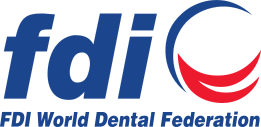Oral Health and Noncommunicable Diseases (NCDs)
CONTEXT
Noncommunicable diseases (NCDs) are now widely recognized as a major challenge to health and sustainable human development in the 21st century. Oral diseases, the most widespread NCDs, affect almost half of the world’s population over the course of life from early to old age. It is crucial to highlight the urgent need to address oral diseases among other NCDs as a global health priority.
SCOPE
Oral diseases remain a global health problem that is mainly related to individual subjective high-risk approaches. These result in high costs and low effectiveness management strategies. Therefore, this policy statement highlights the importance of a population-level public health approach that integrates different health professionals.
DEFINITIONS
Universal Health Coverage (UHC): All people have access to the full range of quality health services they need, when and where they need them, without financial hardship.
Salutogenic model: the study of the origins of health, focusing on factors that support human health and well-being rather than on disease-causing ones (pathogenesis).
PRINCIPLES
All major NCDs (including oral diseases) share the same social determinants and some common modifiable risk factors. In addition to the traditional lifestyle approach, oral health practitioners should identify approaches that focus on different strategies to facilitate the promotion of oral health, such as life-course analyses, the salutogenic model and social capital, to reduce inequities in general and oral health.
POLICY
Although this policy statement increases awareness of policies focusing on social, environmental and population strategies, it should also support individual strategies.
FDI recommends the following actions:
- Common modifiable risk factors and social determinants
- Stop smoking and reduce harmful alcohol use and sugar intake through measures such as tax increments and advertising restrictions;
- Reduce social inequalities by improving access to health services and ensuring more supportive social conditions for disadvantaged groups;
- Simultaneously adopt health and oral health approaches in all policies to minimize and manage risks to oral health, general health and health equity arising from policies in other sectors;
-
Implement cost-effective, evidence-based, population-wide oral health promotion measures that include campaigns to educate people on how to prevent oral diseases by avoiding risk factors and adopting good oral hygiene habits.
- Associations between oral health and other diseases
- Enhance prevention and management of comorbidities by strengthening interdisciplinary collaboration between oral health workers and other health professionals;
-
Include oral health in curricula for other healthcare professionals and ensure that the education of oral healthcare professionals encompasses the inter-relationships between oral and general health and cultivates interdisciplinary care.
- UHC and primary healthcare
- Integrate oral health and NCD care into broader efforts to achieve UHC;
-
Include oral health and NCD workforce planning in the overall planning of human resources for health and ensure the equitable distribution of oral health and NCD healthcare professionals throughout the health system.
- Life-course approach
- Ensure that oral disease and NCD risks are appropriately considered in all stages of life by strengthening healthcare professionals’ education and collaboration;
- Promote healthy behaviours from an early age by implementing community-based initiatives such as school education programmes;
-
Ensure healthy environments for children. For example, ban sugar-sweetened beverages and unhealthy snacks in schools and ensure that healthy food is available.
- Disease surveillance and research
- Include oral disease and NCD surveillance (including the surveillance of common modifiable risk factors) in epidemiological monitoring;
- Promote research on effective interventions for oral health and NCDs (focusing on what works in the area of social and behavioural interventions) to tackle common modifiable risk factors.
- Oral health, NCDs and development
- Integrate oral health and NCDs into Sustainable Development Goals (SDGs) strategies and monitoring frameworks.
KEYWORDS
noncommunicable diseases, NCDs, comorbidities, modifiable risk factors
DISCLAIMER
The information in this policy statement was based on the best scientific evidence available at the time. It may be interpreted to reflect prevailing cultural sensitivities and socioeconomic constraints.
REFERENCES
-
Accelerating action on oral health and NCDs -Achieving an integrated response. NCD Alliance and FDI, 2017. Available from:
- Thomas Gerhard Wolf, Maria Grazia Cagetti, Julian-Marcus Fisher, Gerhard Konrad Seeberger, Guglielmo Campus. Non-communicable Diseases and Oral Health: An Overview. Front Oral Health, 2021; 2:725460. doi: 10.3389/froh.2021.725460. eCollection 2021.
- Marco A Peres, Lorna M D Macpherson, Robert J Weyant, Blánaid Daly, Renato Venturelli, Manu R Mathur, Stefan Listl, Roger Keller Celeste,Carol C Guarnizo-Herreño, Cristin Kearns, Habib Benzian, Paul Allison, Richard G Watt. Oral diseases: a global public health challenge. Lancet, 2019; 394: 249–60.
- The Economic Rationale for a Global Commitment to Invest in Oral Health, white paper 2024. Available from: https://www3.weforum.org/docs/WEF_The_Economic_Rationale_for_a_Global_C…
